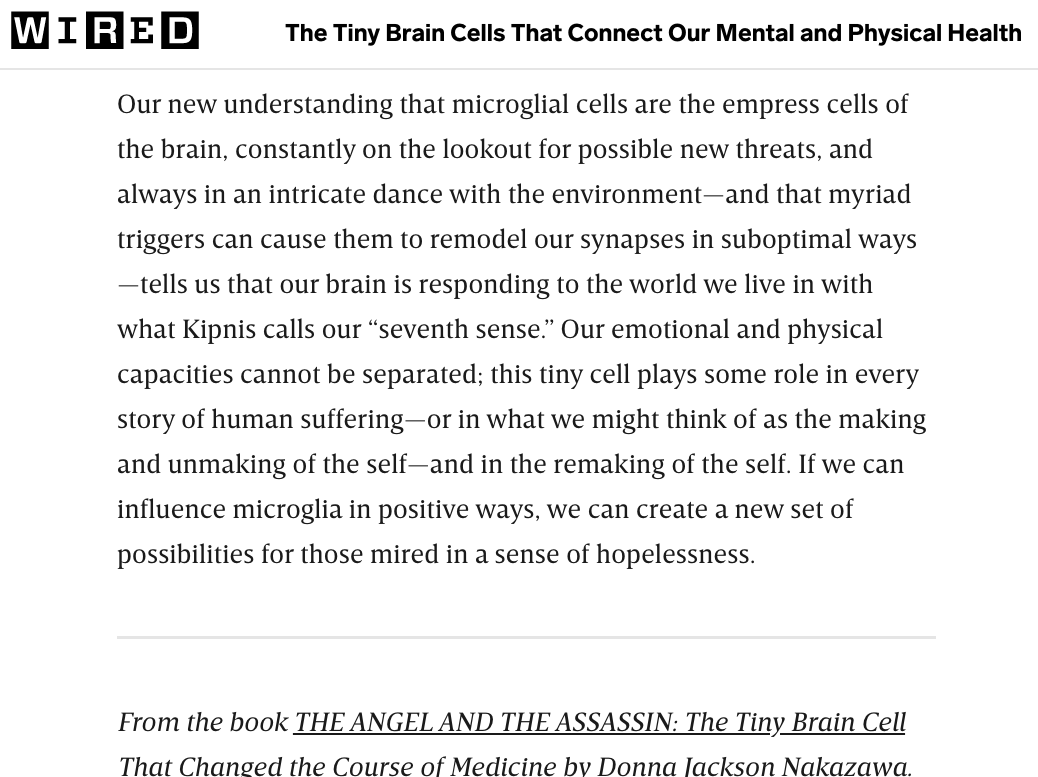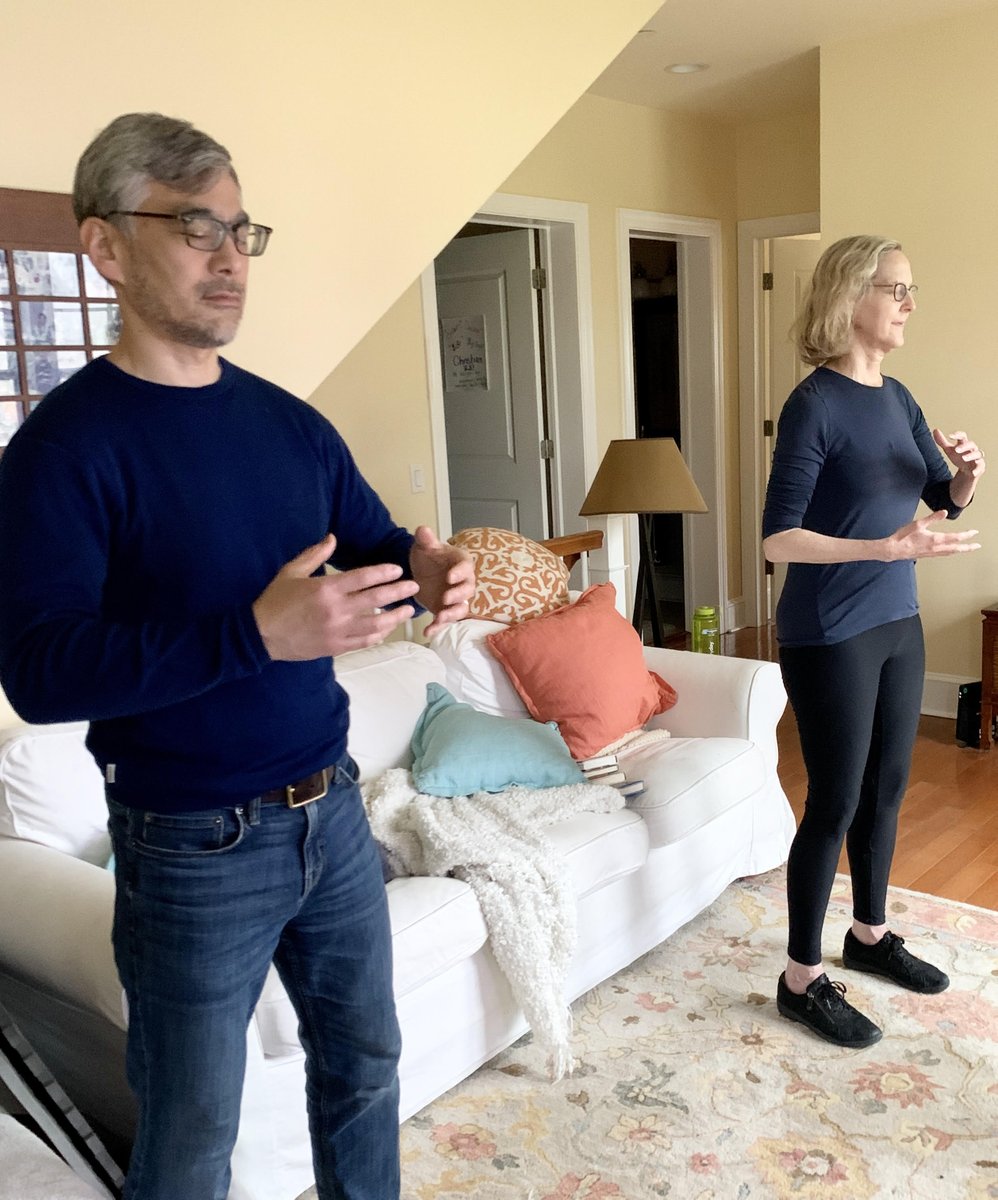As a SciComm journalist with 30 years of reporting and 6 books under my belt, which focus on how our stress response governs our body’s immune health, I’ve been thinking about all that I’ve learned and how I might help you quiet your body and mind during this #pandemic.
For many of us the collective trauma we’re facing now may trigger old feelings. If you faced a lot of adversity growing up, this may bring up sensations reminiscent of what you once felt as a child, trapped in a bad or frightening situation, not knowing how or if you& #39;d survive.
For those who fall into the high-risk category – immune compromised – it may invoke a familiar sense of dread and helplessness that we’ve experienced earlier in our lives. Many of us who’ve had long or repeated hospitalizations manage a kind of Medical PTSD.
This pandemic may be triggering memories and feelings of fear because we recall how vulnerable we felt when we spent weeks or months in a hospital bed, fighting for our lives.
Many others, 60 and older, may be feeling the vulnerability and helplessness that comes with staring at our own mortality, the physical losses that come with aging, the raw grief that can arise reminiscing over our lives: regrets, unimaginable tragedies, as well as the joys.
If I put these three factors into a Venn diagram, well, I’d BE the Venn diagram. That’s true for many of us. The more trauma we’ve experienced in life the more we may find ourselves lost in our own spinning thoughts right now, having trouble making even the smallest of decisions.
That’s a trauma state and many, many people I’m talking to are feeling it. We’re spending too much time in our heads, with no distraction and too little action.
The left amygdala gets highly active when we respond to stressful events in our environment with chronic rumination – dwelling in negative thoughts about oneself, one’s actions, or those of others – as opposed to taking action to relieve stress.
I& #39;ve learned, not only for myself, but as a journalist, as I& #39;ve sat with and listened to thousands of people tell me their stories, that those who’ve faced unimaginable adversity, loss, illness, also know an extraordinary amount about flourishing in the face of uncertainty.
If you read my books you know I write a lot about how each millisecond of our lives our brain is dancing with cues and messages from the environment around us, trying to assess whether we are safe, or not safe.
If the messages our brain gets tell us that we& #39;re under threat our inflammatory stress-response ramps up in ways that can make us more vulnerable to illness. If our brain receives messages that we are safe, that helps to regulate our immune system in ways that help protect us.
One of the things I’ve written a lot about is recent neuroscience which shows how brain and body respond to emotional stressors and threats as if they are biological pathogens, leading to the release of inflammatory cytokines that damage our immune health.
When we perceive ourselves to be under constant threat, our body churns out inflammatory factors as if we are experiencing a pathogenic hit. (If you want to learn more about this, read my book, The Angel and the Assassin.)
We need to feel socially and emotionally safe in order for our immune system to function optimally.
The good news is that we have so much agency here in terms of managing our threat stress-response.
The moment by moment choices we make matter if we are to flourish in crisis.
The good news is that we have so much agency here in terms of managing our threat stress-response.
The moment by moment choices we make matter if we are to flourish in crisis.
Ask yourself: “Hello Brain: what messages am I sending you right now?” Most of us are sending our brain non-stop danger-alert signals from #pandemic tweets that are upping our stress-response at a time when we need our immune system to be more regulated than ever.
Those with a history of adversity know, due to years of experience, that using self-agency and making micro-changes to find ways to dampen down our stress-immune response and calm our nervous system, matters in protecting our immune health. In how we feel NOW.
Most of us have learned we do better mentally and physically when we’re making the effort to exit a chronically stressed state and move from low action/high anxiety into high action/lower anxiety (steps to downshift the stress response ARE action). It’s work. It’s not easy.
This is a terrifying time if you are in the center of the Venn diagram. It is a terrifying time even If you aren& #39;t and are worried about loved ones and the world and how this will all turn out. (I worry about my son, who is sheltering in place on the other side of the country.)
There are so many actions we CAN’T take right now. We have to double down on what we know about how to manage uncertainty. We know micro-changes matter. We have agency.
We are the drivers of the choices we make about what to feed our brain minute by minute. (For more on that, see my article in @WIRED on this: https://www.wired.com/story/the-tiny-brain-cells-that-connect-our-mental-and-physical-health/">https://www.wired.com/story/the... )
Yes, many of the positives we may have relied on to bolster us amidst adversity (and boost good stress hormones like oxytocin) emerge from go-tos we can’t go-to now: hugging friends, being with loved ones. (I can only imagine what it will be like to hold my son in my arms again.)
So we have to get really creative, try new things, spend more of our day actively stacking in positives to manage our threat-stress response. Over the next 30 days I& #39;m going to share some of what I& #39;m doing to bring down my threat-stress response. I hope you& #39;ll share your ideas.
#HelloBrain: Today, we are doing Qi Gong for an hour focusing on micro-movements and breath. (I usually do pilates with my physical therapist to quiet neurological pain but I can& #39;t go out to PT). Can I go a whole hour without fear thoughts about #coronavirus? I’m going to try.

 Read on Twitter
Read on Twitter



